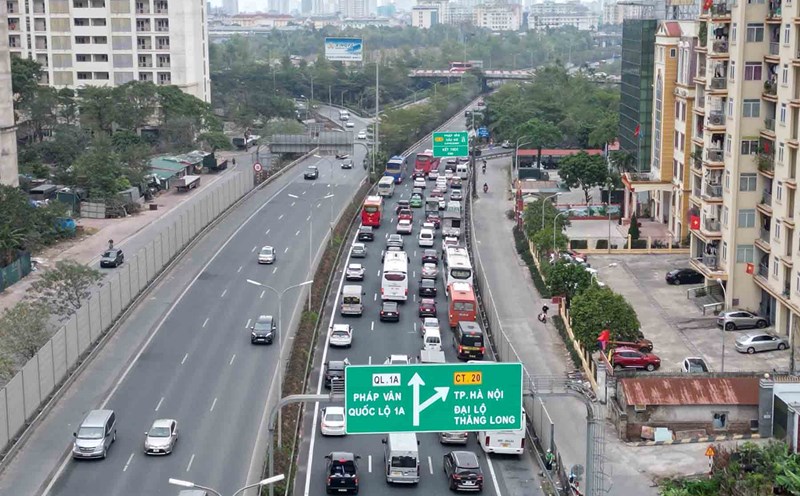The green economy is moving towards a sustainable development model. A country that wants to truly develop sustainably must not only protect the environment but also improve the environment for the better.
A business that wants sustainable development must choose a circular or product value chain production option, which is a green economy. Therefore, since its establishment, the company has made great efforts to successfully build and develop a green environmental production and service enterprise in both the main areas of waste treatment and safe food production and trading.
For waste treatment:
Since 2015, trusted by the People's Committee of Quang Ninh province, the company was assigned to build an inter-regional solid waste treatment area (Western Quang Ninh province). Up to now, the domestic waste treatment capacity has reached about 400 tons/day using 100% 100% non-classified incineration technology (treating both fine and leachate) without burying; during the treatment process, no wastewater is generated into the environment; the quality of surrounding air and emissions is guaranteed QCVN; ash and slag are used to produce construction materials (production of block bricks).
Every day, the company typically destroys an average of 500 tons of household waste and common industrial waste, making it green - clean for 3 localities: Uong Bi city, Quang Yen town and the West of Ha Long city.
For clean agricultural production:
Since 2012, the company has invested in agriculture in the direction of clean agricultural development with a model of product value chain production with the motto of linking 3 houses: farmers, scientists, business houses, forming a group of farmers to attract agricultural land, human resources ... to form a series of vegetable and fruit production chains - Safe food for large supermarket systems such as Metro, BigC, the kitchen of the province, the brands of the province, the brands of the province, the kitchen, the brands of the province, the kitchen of the market trusted and selected by the people. Every year, the company produces and supplies over 600 tons of vegetables meeting OCOP standards.
The company has a Center for Pre-processing - Producing safe vegetable varieties in Cong Hoa ward - Quang Yen town (Quang Ninh province), with a land area of 6,131m2, built and put into operation since 2013. In addition, it is a place to receive, train and disseminate science and technology on safe agricultural production and high-tech agriculture.
Over many years of operation, the company has received many certificates of merit from ministries, the People's Committee of Quang Ninh province, the Vietnam Association of Small and Medium Enterprises, VCCI and local departments/sectors, affirming its role in research, innovation, contributing to the development of the green economy and enhancing the scientific position of Vietnam.
The operational orientation of our company in the following years:
Continue to maintain and expand the scale of waste treatment to meet the needs of domestic waste treatment in Ha Long, Uong Bi, Dong Trieu, Quang Yen areas, which are shifting from the current non-heat-powered waste incinerator to the 10MW " Waste-to-energy plant": The expected capital for this plant is about 1,500 billion VND.
Add industrial waste treatment lines (Serving Quang Yen, Uong Bi, Dong Trieu Industrial Parks), sludge treatment, wastewater treatment and medical waste: ( approved Planning for 2023, feasible project): Total investment is about 800 billion VND.
For the agricultural production sector: Focus on applying digital transformation, improving science and technology to research the production of clean vegetables, clean agricultural products, and improving productivity to meet the needs of the community. In particular, the Vegetable and fruit Processing Factory will be deployed into long-term products, or for special subjects such as: nutritional flour packages from vegetables, tablets... to ensure sustainable agricultural production, so that farmers are not afraid of not being able to consume the products they produce, or afraid of the crop losing value.
Research on applying AI technology to build an aquaculture plan with an area of thousands of hectares in Dam Ha district to optimize economic efficiency and sustainably develop the aquaculture sector in the region.
During the process of construction and establishment, the company has encountered many difficulties in accessing resources, especially access to credit sources, so we propose that the State and the State Bank (SBV) have specific policies for green economic development, and must have green credit for the development of the country:
Green credit is considered an inevitable direction to promote sustainable growth, but according to my awareness, up to now, green credit in Vietnam is still very low compared to expectations (if it is green credit, it accounts for only 4.5% of the total outstanding loans of the economy).
For a business, accessing green capital is almost too far away, manifested in the following problems:
The bank may not be able to include businesses in the "Green" portfolio because there are no green criteria for each industry and field, so when working with the bank, we cannot access preferential capital. Specifically, the construction of our waste treatment and circular agricultural production factory has been approached by many banks for more than 10 years, which has taken a lot of effort to complete, but we still cannot access "green credit" capital.
Assets are guaranteed to be limited, unable to access credit capital, let alone green credit even though green projects require large investments, long capital recovery times: In agricultural production, we do not have traditional mortgaged assets, cannot use project-formed assets to mortgage loans, but often have to use assets other than the project to secure loans.
The risks and financial efficiency of the green economy are not attractive, so the Bank is not interested in green projects.
I have some suggestions as follows:
- Propose that the state have specific regulations on green projects for each industry in each field, the SBV and commercial banks (CBs) consider having better credit policies and interest rates for green enterprises.
- Access and conditions for meeting to borrow cheap capital from Fund sources and sources from international organizations still face many difficulties. Propose that ministries, departments, SBV, and SBV increase access to preferential capital for the Green Credit sector from international financial institutions, green credit funds, etc. to provide cheap green credit capital for businesses to operate more effectively, speed up the approval process and reduce conditions for businesses to access this capital source.
- Regarding asset valuation: Propose that banks consider appraising mortgaged assets of green projects, usually land allocated in the form of land lease but exempted from land use fees (banks do not receive assets guaranteed by this land), the State may have a form of land allocation for green projects, or stipulate that banks are allowed to mortgage land for lease but exempt from land use fees, or consider the credit factor for green projects.
- Propose that commercial banks participate strongly and spend more capital to sponsor businesses with production and business activities to create green products, clean the environment, and have specific policies for these businesses. Currently, according to the information I have researched, the proportion of green credit sponsored is still limited.
- In case the project has unfortunate revenue that is not according to the plan, the bank should not put the problem of debt expansion first, but may have solutions to restructure capital sources to extend debt repayment time so that the enterprise has conditions to recover and develop.












